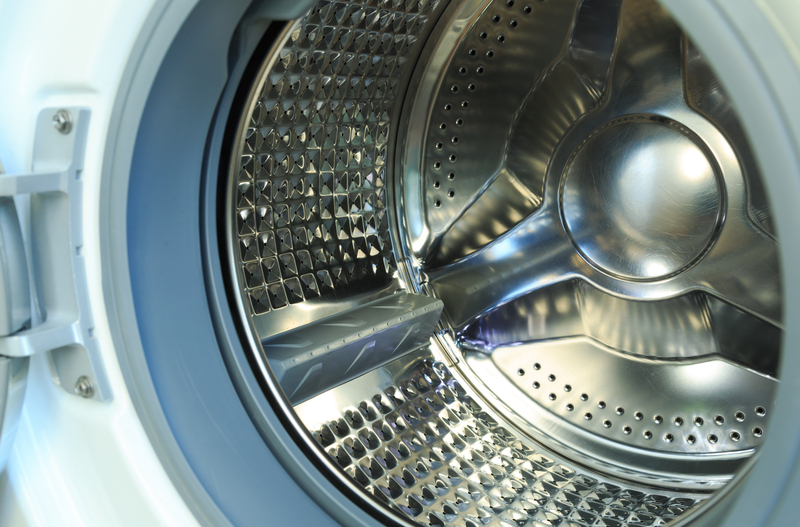Clear Skies Indoors: Prioritizing Air Quality at Home and Work
In today's fast-paced world, we pay so much attention to outdoor pollution that we often overlook the importance of indoor air quality. Yet, indoor air pollution can have a more significant impact on health and well-being than what's in the open air. From homes to offices, prioritizing clean air should be a top concern for anyone seeking a healthier, more productive lifestyle. In this comprehensive guide, we'll explore the dangers of indoor air contaminants, reveal strategies for improving air quality indoors, and explain why the quest for clear skies indoors is essential for everyone.
Why Air Quality Indoors Matters More Than Ever
Most people spend around 90% of their time indoors. Whether at home or at work, the quality of the air we breathe can affect everything from productivity to respiratory health. Poor indoor air quality has been linked to headaches, fatigue, allergies, and even serious conditions such as asthma or cardiovascular disease. According to the World Health Organization, indoor air pollution causes millions of premature deaths worldwide each year.
- Health effects: Allergies, headaches, fatigue, asthma, and increased risk of chronic diseases.
- Productivity: Better air quality can translate to higher concentration and fewer sick days.
- Comfort: Cleaner air improves overall comfort at home and in workplaces.
- Long-term benefits: Consistent exposure to healthy air reduces healthcare costs and improves life quality.

Main Sources of Indoor Air Pollution
To truly achieve clear skies indoors, it is important to recognize the various sources of pollution that threaten our indoor environment. Understanding these contaminants helps us devise effective strategies to minimize and eliminate them.
Biological Contaminants
- Mold and Mildew: Thrive in damp, poorly ventilated spaces, often in bathrooms, basements, and around leaky pipes.
- Pollen: Enters homes through windows, doors, and clothing, triggering allergies.
- Pet dander: Shed by animals, a common allergen.
- Bacteria and Viruses: Can accumulate in unclean HVAC systems and poorly ventilated areas.
Chemical Pollutants
- Volatile Organic Compounds (VOCs): Released from cleaning agents, paints, aerosols, carpets, and furnishings.
- Formaldehyde: A carcinogenic gas from composite wood products, glues, and some textiles.
- Pesticides: Used for pest control but often linger in the air and on surfaces.
- Combustion Byproducts: Carbon monoxide, nitrogen dioxide, and particulate matter from stoves, fireplaces, and tobacco smoke.
Particulate Matter (PM)
- Dust mites: Found in bedding, upholstery, and rugs.
- Fine particles: From smoking, candles, or cooking, especially frying and grilling.
Each of these pollutants can threaten indoor air quality. The first step to clear indoor skies is reducing their presence.
How to Improve Air Quality at Home
Ensuring the air inside your home is as fresh as a clear sky is both possible and practical. Here are some comprehensive strategies:
1. Increase Ventilation
- Open windows and doors whenever possible, especially during mild weather. Cross-ventilation is most effective for refreshing indoor air.
- Use exhaust fans in bathrooms, kitchens, and laundry rooms to reduce moisture and odors.
- Air out new furniture, carpets, and mattresses before use, as these can emit VOCs.
2. Keep Humidity in Check
Maintain indoor humidity between 30% and 50% to inhibit mold, dust mites, and bacteria.
- Dehumidifiers help in damp areas like basements.
- Fix leaks promptly to prevent moisture accumulation.
- Use air conditioning during humid summer months.
3. Regular Cleaning Routines
- Vacuum frequently with a HEPA filter vacuum to remove dust, pet dander, and allergens.
- Mop hard floors using a damp mop; avoid mopping chemicals with harsh VOCs.
- Wash bedding and curtains regularly in hot water to eliminate dust mites and pet fur.
4. Control Chemical Pollutants
- Choose low-VOC products: Look for paints, household cleaners, and air fresheners labeled as low or zero VOC.
- Avoid indoor smoking: Tobacco smoke is a major indoor air pollutant with serious health risks.
- Store chemicals safely: Keep paints, solvents, and pesticides tightly sealed or outside living areas.
- Consider indoor plants: Some plants like spider plants, peace lilies, and snake plants can help filter toxins, though they should not replace other measures.
5. Use Air Purification Technologies
- HEPA Filters: These can capture 99.97% of particles >0.3 microns.
- Activated carbon filters: Good for trapping gases, odors, and certain chemicals.
- UV-C purifiers: Designed to kill bacteria and viruses, though their effectiveness varies.
- Maintenance is key: Change air filters according to manufacturer recommendations for best results.
Strategies for Indoor Air Quality at Work
Workplaces foster productivity and creativity. Yet, poor workplace air can lead to sick building syndrome, absenteeism, and reduced performance. Here's how businesses and employees can be proactive:
1. Assess and Monitor Regularly
- Conduct indoor air quality audits to measure levels of CO2, particulates, and VOCs.
- Install air quality monitors for real-time data and alerts.
2. Prioritize Ventilation and Filtration
- Optimize HVAC systems: Use proper filters, regularly cleaned ducts, and scheduled maintenance.
- Bring in outside air: Ensure ventilation systems circulate enough fresh air, not just recirculated building air.
3. Control Sources of Pollution
- Implement smoke-free policies throughout office environments.
- Restrict chemical use: Limit use of strong cleaning products and pesticides to after-work hours.
- Designate eating areas: Prevent food odors and spillage in shared workspaces.
4. Encourage Cleanliness
- Provide cleaning supplies that are eco-friendly and low in VOCs.
- Arrange regular deep cleaning of carpets, ventilation grilles, and communal equipment.
Innovations in Indoor Air Quality Technology
Embracing modern technology can help ensure indoor air clarity. Some current and emerging solutions include:
- Smart air purifiers: With sensors that adjust cleaning rates based on current pollution levels.
- Real-time air quality monitors: Provide instant readings of PM2.5, CO2, and humidity to inform adjustments.
- Germicidal UV lamps: Installed in HVAC systems to neutralize pathogens.
- Automated ventilation: Climate control systems that respond dynamically to air quality readings.
Staying informed about innovations gives you a head start on defending your space from invisible pollutants.
Benefits of Clear Indoor Air
- Improved respiratory health: Reduced risk of allergies, asthma, and lung illnesses.
- Enhanced cognitive abilities: Studies show cleaner air improves concentration and memory.
- More restful sleep: Fewer nighttime irritants and improved oxygen levels aid deep sleep.
- Lower absenteeism: Fewer illnesses lead to more days at work and school.
- Better mental well-being: Clean air supports a calmer, more pleasant indoor environment.
Common Myths About Indoor Air Quality
Let's debunk a few common misconceptions:
- Myth: New homes have better indoor air quality.
Fact: New constructions can off-gas VOCs from paints and building materials for months or years. - Myth: Indoor air is always cleaner than outdoor air.
Fact: Indoor air can be two to five times, sometimes even 100 times, more polluted than outdoor air. - Myth: Plants alone can purify indoor air.
Fact: While helpful, the number of plants needed for a measurable effect is impractically high for most homes and offices.
Signs That Indoor Air Quality Needs Attention
Recognizing early signs can help prompt timely interventions.
- Frequent headaches or fatigue when inside, which resolve outdoors
- Unexpected allergy symptoms or irritated eyes, nose, and throat
- Persistent musty odors or visible mold growth
- Stale, stuffy air in rooms with little apparent airflow
- Increased dust accumulation even after regular cleaning
If these symptoms arise, conduct an air quality test or consult professionals for inspection.

Clear Skies Indoors: A Continuous Mission
Prioritizing air quality at home and work is not a one-time effort. It is an ongoing commitment that pays off in well-being, comfort, and productivity. By managing ventilation, controlling pollutants, embracing technology, and staying aware, you can enjoy the feeling of clear skies indoors, no matter the environment.
Quick Checklist for Superior Indoor Air Quality
- Ventilate often
- Control moisture and humidity
- Clean regularly and thoroughly
- Minimize use of chemicals
- Monitor air quality with smart devices
- Maintain HVAC systems
Conclusion
Your pursuit of clean indoor air shapes the health of your family, colleagues, and yourself. Remember, it's not just about avoiding illness--good air quality supports sharper minds, happier moods, and a higher quality of life. Embrace these strategies and savor the benefits of truly clear skies indoors, wherever you are.